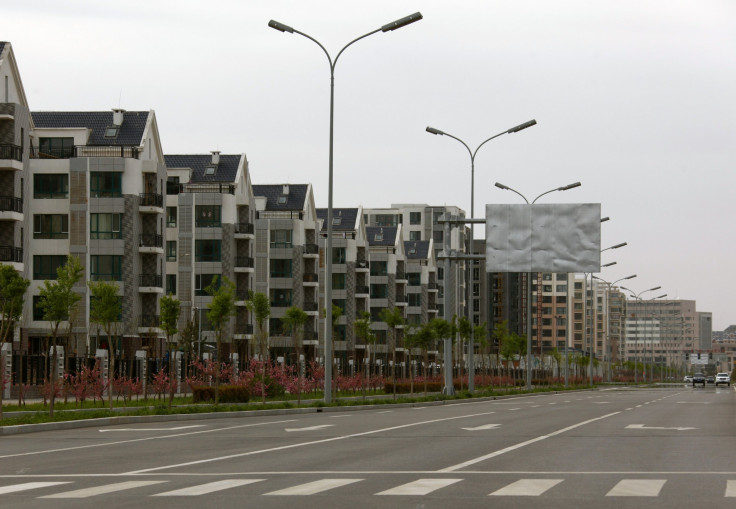China's Urbanization Efforts Have Left Modern New Cities Uninhabited, Having Failed To Attract Businesses Or Residents

A recent wave of construction frenzy driven by a nationwide investment boom has kept China’s economy buoyant, but it has also left many newly modernized suburbs and cities essentially ghost towns, as the developments have failed to attract businesses or residents.
Urbanization, which is estimated to see 250 million people move from rural areas to cities over the next 20 years, is being touted by Premier Li Keqiang, who believes the process will keep China’s economy growing well into the future, according to the Wall Street Journal.
"Urbanization will not only drive tremendous consumption and investment demand, and create employment opportunities, but directly affect the well-being of the people," Li said in March during his first news conference as premier.
But Li’s dreams may be challenged by harsher realities. Tieling, a small city in northeastern China, launched a plan to build a satellite city six miles down the road, spending millions of yuan to clean up surrounding marshland, but four years later, what is called Tieling New City is virtually a ghost town.
Housing blocks that won recognition from the United Nations for providing good affordable homes are almost empty, since businesses that were supposed to create local employment have not materialized. There is little point to move to the new town without the prospect of jobs.
Theoretically, urbanization stimulates growth, as urban dwellers typically earn more than their rural counterparts, but to that end, jobs must be created to draw people into cities. Tieling New City underscores that difficulty.
“Where are the people? There’s no one here,” said Bo Yuquan, the middle-aged owner of a flooring store, one of the few business owners lured to a development park in Tieling New City. “I’ll be out of business soon. My staff and I are discussing moving to Beijing to find work.”
Earlier waves of urbanization in China were driven by the export sector, but that is unlikely to be repeated, with persistently weak global demand and rising costs making Chinese goods less competitive than they were a decade ago. Overcapacity in many industries, including steel, solar and shipbuilding, will further strain job creation, the Wall Street Journal reported.
A nationwide investment boom has filled the gap with construction jobs in recent years, but with China’s record of building first and creating demand later, new cities like Tieling New City are left empty. In addition, the investment boom has threatened to fuel inflation and bog down the financial sector with bad loans, particularly if people don’t move in and bring the promised economic dividend.
Furthermore, smaller cities lack the pulling power to lure people away from developed metropolitan areas.
"With more and better job opportunities in higher-tier cities, many lower-tier cities have actually been experiencing a net outflow of population, while land sales [to home builders] there increased rapidly, exacerbating the housing oversupply," wrote Credit Suisse property analyst Du Jinsong in a recent note.
Efforts from the Tieling government to draw people to the new city have failed thus far. The few rural migrants who live there used to farm the land it was built on, and some now work shoveling snow and sweeping streets of an empty city.
Some government offices were moved to the new city, but so far, most prefer to commute from their existing homes in the old city. Similarly, 50,000 students have been enrolled in classes in the new city, with the hope of the parents moving closer to the schools, but residents have been hesitant to do that, with the new city’s lack of services and absence of a community.
Even as the failures pile up, Tieling continues to build. The municipal government has plans to spend another $1.3 billion on projects in the new city, including an art gallery, gymnasium and indoor swimming pool, putting municipal finances under increasing stress.
Cui Xinzi runs a stall at the only shopping center in the new city, selling leather jackets. She commutes from the old city, despite having bought a place in the new city three years ago. She likes the idea of retiring to the new city, but isn’t optimistic its population will increase, according to the Wall Street Journal.
“It still needs more time, but it’s really hard to say,” she said with a sigh. “They’re building a new shopping center, so I hope so.”
© Copyright IBTimes 2024. All rights reserved.



















